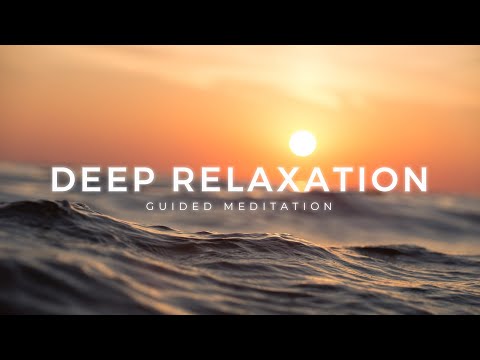You’re about to unlock the universe within your breath.
Deep breathing isn’t just an exercise; it’s the cornerstone of a vibrant, centered existence.
By mastering techniques like diaphragmatic and 4-7-8 breathing, you’ll transform stress into serenity and fatigue into vitality.
Whether it’s the rhythmic dance of alternate nostril breathing or the calming waves of ocean breath, each method promises to harmonize your body and soul.
So, take a deep breath and let’s begin.
Key Takeaways
- Deep breathing techniques can improve both physiological and mental well-being.
- Deep breathing techniques can enhance focus, concentration, and the ability to handle daily pressures.
- Deep breathing techniques can promote a focused and serene state of mind.
- Deep breathing techniques have various benefits including reduced stress levels, improved sleep quality, and enhanced athletic performance.
Understanding Deep Breathing
Dive into the concept of deep breathing and you’ll uncover a transformative practice that can significantly improve your physiological and mental well-being. By engaging with the fundamentals of respiratory science, you can learn to harness the power of your breath. Breath awareness is the first step towards a deeper understanding of this practice.
You see, your respiratory system works tirelessly, a silent rhythm that sustains life. But when you bring conscious attention to this process, something remarkable happens. You begin to influence the very mechanisms that underpin your health.
Deep breathing isn’t just about taking longer breaths; it’s about fully engaging the diaphragm and expanding the lungs to their capacity. This allows for more efficient oxygen exchange, a reduction in blood pressure, and a calming of the nervous system.
As you practice, feel the breath’s journey, notice the expansion and contraction; this is breath awareness in action. It’s a skill that requires patience and persistence. With each inhalation, envision drawing in vitality, and with each exhalation, imagine releasing tension.
This is the essence of deep breathing—a simple yet profound way to rejuvenate your body and calm your mind.
Diaphragmatic Breathing Basics
To master deep breathing, you’ll start with diaphragmatic breathing, a fundamental technique that engages your diaphragm for full, efficient breaths. This practice not only helps increase your lung capacity but also steadies your heart rate and reduces stress.
Here’s how to get started:
| Step | Instruction |
|---|---|
| 1 | Sit comfortably or lie flat on your back. |
| 2 | Place one hand on your chest and the other on your belly. |
| 3 | Inhale slowly through your nose, allowing your belly to push your hand up. Your chest should remain relatively still. |
| 4 | Exhale through pursed lips, feeling the hand on your belly go down, and use it to gently push all the air out. |
| 5 | Repeat this process, focusing on using your diaphragm to breathe. |
As you engage in these breathing exercises, be mindful of the sensations in your body. Notice the expansion and contraction of your abdomen, and let the rhythm soothe your mind. With practice, diaphragmatic breathing will become second nature, enhancing your overall well-being.
Now that you’ve got the basics down, let’s transition into the 4-7-8 breathing technique, another powerful tool to deepen your practice.
The 4-7-8 Breathing Technique
Let’s explore the 4-7-8 breathing technique, a powerful tool you can use to alleviate stress and enhance your sleep quality.
By adopting this simple routine, you’ll notice a significant shift in your ability to relax and wind down after a long day.
It’s a method embraced by experts for its efficacy in calming the mind and preparing the body for rest.
Stress Reduction Effects
You’ll notice a profound sense of calm as you master the 4-7-8 breathing technique, a method proven to reduce stress effectively. This simple exercise, rooted in mindfulness meditation, encourages a focused and serene state of mind, allowing you to detach from the day’s pressures.
As you inhale deeply for four seconds, hold for seven, and exhale for eight, you’re not just filling your lungs with air, but also signaling your nervous system to unwind. Regular practice can lower cortisol levels, the hormone associated with stress, promoting a tranquil and balanced demeanor.
Embrace this peaceful ritual daily, and you’ll find yourself more centered, resilient, and equipped to face life’s challenges.
Now, let’s transition to how this technique also doubles as a sleep improvement method.
Sleep Improvement Method
Many find the 4-7-8 breathing technique an invaluable ally in the quest for better sleep, as it helps quiet the mind and prepares the body for rest. To incorporate this exercise into your sleep hygiene, establish it as a nightly bedtime ritual. Here’s how you do it:
First, settle into a comfortable position in your bed. Close your eyes and part your lips slightly. Exhale fully through your mouth, making a whooshing sound. Then, close your lips, inhaling silently through your nose as you count to four. Hold your breath for a count of seven. Finally, exhale from your mouth for eight counts, repeating the whooshing sound.
Repeat this cycle four times. With practice, this technique can signal your body that it’s time to wind down, promoting a deeper, more restorative slumber.
Alternate Nostril Breathing
Dive into alternate nostril breathing, a technique that balances your respiratory channels and sharpens your focus. Known as Nadi Shuddhi in the ancient yogic traditions, this practice is designed to foster Prana balance, harmonizing the life force energies flowing through your body. It’s a powerful tool to calm your mind and synchronize the dual aspects of your nervous system.
To begin, find a comfortable seated position. Rest your left hand on your knee and raise your right hand to your nose. Gently close your right nostril with your thumb. Inhale slowly through your left nostril, then close it with your ring finger. Pause for a moment. Now, lift your thumb and exhale through your right nostril. Inhale through the right nostril, close it with your thumb, and exhale through the left. This completes one cycle.
Continue this pattern for several minutes, focusing on the flow of breath and the subtle energy it carries. Your inhalations and exhalations should be slow, deep, and of equal length, ensuring that you’re not rushing the process or straining your breath. As you alternate between nostrils, you’ll experience a sense of equilibrium and mental clarity that can enhance every aspect of your practice.
Box Breathing Method
With the Box Breathing Method, you can further stabilize your mind and enhance concentration by following a simple, rhythmic breathing pattern. This technique, which involves breath control, is about creating a steady rhythm that can lead to significant health benefits.
| Step | Duration | Focus |
|---|---|---|
| Inhale | 4 seconds | Slowly draw breath into lungs |
| Hold | 4 seconds | Maintain full lungs |
| Exhale | 4 seconds | Release air completely |
| Hold (empty) | 4 seconds | Keep lungs empty |
Begin by finding a comfortable seated position. Close your eyes, and let your body relax. Start to tune into your breath, and prepare to move through the box breathing cycle.
Inhale slowly for four seconds, letting your lungs fill completely. Hold your breath at the top of the inhalation for another four seconds. Exhale slowly and evenly for four seconds until your lungs are empty. Then hold your breath once more, this time with empty lungs, for four seconds.
Repeat this cycle for several minutes. You’ll notice an increased sense of calm and focus as you practice this breath control technique. It’s an excellent tool for managing stress and improving your overall well-being.
Transitioning from the focused attention of box breathing, let’s explore how the ocean breath can foster deep relaxation in the next section.
Ocean Breath for Relaxation
After mastering the Box Breathing Method, you can deepen your relaxation by transitioning to the soothing rhythm of Ocean Breath, also known as Ujjayi Pranayama. This ancient technique enhances your practice by emulating the rhythmic sound of ocean waves. It’s a simple yet profound method to calm your mind and steady your heart rate.
Begin by sitting comfortably with your spine straight and shoulders relaxed. Close your eyes and let your body ease into stillness. As you inhale slowly through your nose, slightly constrict the back of your throat to create a gentle hissing sound, like the ebb and flow of the sea. This sound should be audible to you, guiding you deeper into the practice.
Now, incorporate ocean visualization. Picture the waves rolling in towards the shore as you breathe in, and imagine them retreating back to the ocean as you exhale. Allow the wave synchronization with your breath to be a grounding force, anchoring you in the present moment.
Continue this breathing for several minutes, letting the steady sound of your breath wash over you, just as waves caress the shoreline. With each exhale, release any lingering tension, finding tranquility in the rhythm of your own internal ocean.
Coherent Breath Synchronization
Let’s turn your attention to Coherent Breath Synchronization, a technique that can significantly reduce your stress levels.
You’ll find that by harmonizing your inhalations and exhalations to an optimal rate, you can achieve a state of deep relaxation and balance.
This rhythm, typically around five breaths per minute, is key to unlocking a more serene and focused mind-body connection.
Benefits on Stress
Why not consider coherent breath synchronization as a powerful tool to significantly reduce your stress levels?
This technique, rooted in mindfulness meditation, allows you to become more present and aware of your breathing pattern. As you synchronize your inhalations and exhalations to a steady rhythm, you encourage your nervous system to shift from a state of alertness to one of calm.
Studies demonstrate that such synchronized breathing can help lower cortisol levels, the hormone associated with stress. You’ll find that with consistent practice, you’re better equipped to handle the ebbs and flows of daily pressures.
Now, let’s delve into finding your optimal synchronization rate, which is key to maximizing the benefits of this practice.
Optimal Synchronization Rate
Finding your optimal synchronization rate involves experimenting with different breathing patterns until you’ve discovered the rhythm that brings you the deepest sense of calm and focus. Understanding your body’s respiratory mechanics is key to this personal discovery.
Here’s a guide to help you tap into synchronization science and enhance your breathing practice:
- Start Slowly: Begin with a comfortable pace and gradually slow your breath to find your natural rhythm.
- Measure Your Breath: Count how long each inhale and exhale lasts, aiming for balance.
- Listen to Your Body: Pay attention to physical responses, looking for a reduction in tension.
- Seek Consistency: Once you find a comfortable pattern, practice it consistently to train your body.
Bellows Breath for Energy
Bellows Breath, or Bhastrika Pranayama, invigorates your energy levels by mimicking the pumping action of a bellows. This technique, deeply rooted in the Pranayama origins of ancient yoga, involves a rapid and forceful inhalation and exhalation, which can significantly enhance your athletic performance by increasing oxygen flow to your muscles and brain.
To practice, sit comfortably with a straight spine. Begin by taking a deep breath in through your nose, then forcefully exhale, also through your nose, using your diaphragm to push the air out. Immediately follow with a forceful inhalation, again using your diaphragm to draw air in. Continue this pattern rhythmically, like the bellows of a forge, for up to a minute.
As with any powerful practice, it’s essential to listen to your body. If you feel lightheaded or dizzy, take a break and breathe normally. Over time, you’ll build the capacity to maintain Bellows Breath longer, reaping the benefits of increased energy and vitality.
Now, as you breathe in the vitality of Bellows Breath, prepare to transition to a more grounding technique. Next, we’ll explore the five-finger breathing practice, a method that can help you anchor your energy and bring about a sense of calm and focus.
Five-Finger Breathing Practice
After energizing yourself with Bellows Breath, you’ll find the Five-Finger Breathing Practice to be a soothing counterbalance that helps center your mind and body. This technique is a simple yet powerful tool for mindfulness integration and enhancing sensory focus.
Here’s how to practice Five-Finger Breathing:
- Begin in a comfortable seated position. Let your hands rest on your knees, palms up.
- Slowly trace up the outside of your thumb with your index finger as you take a deep, slow breath in.
- Pause at the top of your thumb and hold your breath for a moment.
- As you trace your finger down the inside of your thumb, exhale gently and fully.
Continue this pattern with each finger, allowing the breath to guide the movement and your mind to focus on the sensation of air moving in and out of your body. With each inhale and exhale, invite calmness into your being.
Incorporate this practice into your daily routine to cultivate a serene and clear state of mind. The deliberate attention to breath and movement promotes a harmonious connection between your physical and mental states, anchoring you in the present moment.
FInal Thoughts
Imagine your mind as a sky, where each deep breath is a gust of wind, clearing away the clouds of stress.
Studies show that just a few minutes of deep breathing daily can significantly reduce anxiety.
So, take the reins of your inner climate—use these breathing techniques to cultivate a serene expanse of blue, inviting peace and clarity into your practice.
Breathe deeply, live fully, and watch your personal well-being soar.




